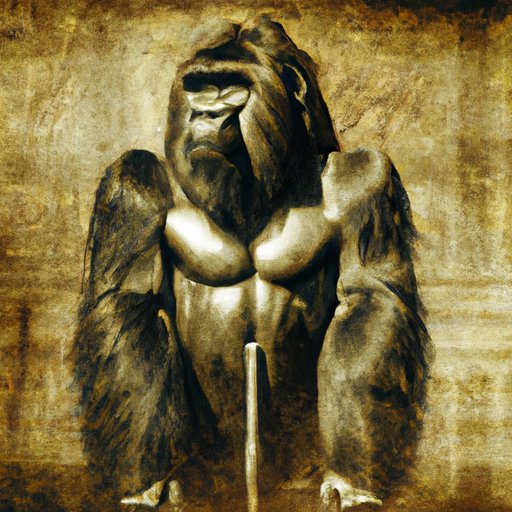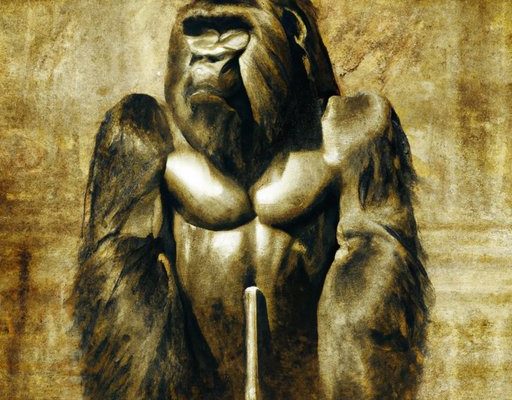
Gorillas symbolize various things across different cultures, often embodying ideas of strength, wisdom, or even mystery. Just like how a strong oak tree can represent stability and endurance, the gorilla often stands for resilience and prowess in human storytelling. You might be surprised to learn just how far back these ideas stretch and how influential they still are today. Let’s dive into the fascinating world of gorillas in culture and folklore, unpacking their meanings and the stories we tell about them.
Gorillas in African Folklore
Many African cultures hold the gorilla in high regard, often weaving them into their folklore and traditions. For example, in some parts of Central Africa, the gorilla is seen as a guardian of the forest. Local tales often depict them as protectors of nature, embodying the strength required to maintain balance in the wild.
These stories often highlight the gorilla’s intelligence and emotional depth, portraying them not just as beasts, but as beings with wisdom that can connect with humans. In several legends, gorillas are also seen as symbols of strength. A common theme is their role as powerful figures in the struggle between good and evil. This portrayal not only emphasizes their physical might but also their ability to overcome challenges, which resonates deeply within community narratives about resilience and protection.
The Role of the Gorilla in Community Beliefs
In these tales, the gorilla reflects shared values like community and responsibility. For instance, when a gorilla helps other animals or humans in distress, it sends a powerful message about the importance of looking out for one another. These narratives are not just entertaining; they teach lessons about behavior and morality. The gorilla often becomes a symbol of unity, reminding people of the strength found in collaboration.
Interestingly, as cultures evolve, so do their stories about gorillas. In modern retellings, you might find these creatures portrayed in new lights, such as environmental warriors fighting against poaching and habitat destruction, further intertwining their identities with the struggles of today.
Gorillas in Western Pop Culture
In the West, gorillas have made quite a splash in movies, books, and even cartoons. From King Kong to movies like “Gorillas in the Mist,” they are often depicted as misunderstood creatures. In King Kong, for instance, the story revolves around fear and fascination, exploring how humanity perceives power and beauty.
These portrayals often stir up mixed feelings. On one hand, they showcase the gorilla’s strength and raw power, while on the other, they highlight their vulnerability and the threats they face from humans. You might be wondering if this reflects our complex relationship with nature—how we both admire and fear elements that we don’t fully understand.
Symbols of Hope and Conservation
Interestingly, modern representations also bring attention to the conservation efforts for gorillas, spotlighting their endangered status and the importance of protecting their habitats. Movies and documentaries not only entertain but also educate audiences about the plight of these incredible creatures. Through storytelling, they can inspire action for wildlife preservation, showing how we can change the narrative from one of exploitation to one of protection and respect.
Gorillas in Literature
Literature has also played a significant role in shaping how we perceive gorillas. Books like “The One and Only Ivan” illustrate the emotional intelligence of these creatures. Ivan, a captive gorilla, conveys human-like thoughts and feelings, inviting readers to empathize with his situation. This kind of portrayal acts as a bridge, allowing us to see gorillas not just as animals but as beings with communication skills and emotions.
Authors often use gorillas to symbolize deeper themes. For instance, they can represent the struggle against confinement, drawing parallels between the lives of gorillas in captivity and the human experience of emotional or societal constraints. Through these narratives, authors encourage readers to think critically about freedom and the right to live authentically.
The Impact of Storytelling on Perception
These literary depictions can shift public attitudes toward gorillas and help foster a greater appreciation for wildlife. When readers connect with a gorilla character, it can spark their curiosity and compassion, prompting them to learn more about real gorillas and the issues they face in the wild. Literature has the power to humanize these creatures and advocate for their conservation.
Gorillas as Metaphors
In addition to being prominent characters, gorillas often serve as powerful metaphors in various forms of art and media. Their size can represent strength and dominance, while their social structures reflect themes of community, loyalty, and protection. Think of how often these themes come up in discussions about leadership and teamwork; the gorilla becomes an archetype for these qualities.
Moreover, the gorilla’s dual nature—both gentle and fierce—makes it a rich metaphor for the complexity of human emotions. Whether we see them as symbols of masculinity or protectors of family, they resonate deeply within our own narratives. Just like the varied levels of strength we possess, gorillas remind us that there’s more beneath the surface.
The Use of Gorillas in Art
Artists have captured this complexity in various forms, using gorillas to explore themes of identity and connection. Paintings, sculptures, and even performance art often showcase gorillas as reflections of ourselves, inviting viewers to engage emotionally. This interplay between art and gorillas enhances our understanding of both humans and wildlife, creating a dialogue about our place in the world and our responsibility to protect it.
From their roots in African folklore to their roles in modern media, gorillas have woven themselves into our cultural fabric in countless ways. They transcend simple animal symbols; they embody strength, wisdom, and the complexity of the human condition.
Honestly, as we continue to explore and tell stories about gorillas, we also deepen our understanding of ourselves. The narratives we create—not only entertain but also challenge our perspectives on nature, conservation, and our ethical responsibilities. Understanding how gorillas are represented in culture and folklore reminds us that every story offers a lesson worth learning. So, the next time you encounter a gorilla in a movie, book, or conversation, take a moment to reflect on what that representation means to you and the world around us.

